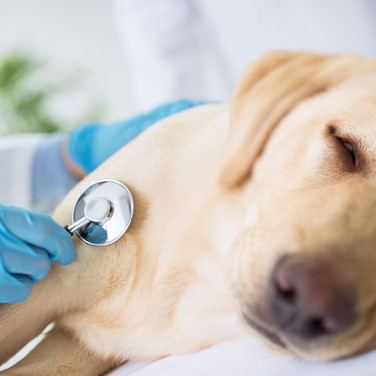SYMPTOMS
Claw and Nail Disorders in Dogs - Causes and Treatment Options
페이지 정보
본문


Nail disorders in dogs
A dog's nails serve multiple purposes, providing stability during walking or running and enabling them to dig or grab objects for activities. Nail disorders can hinder this aspect of their life. Diseases affecting the nails not only impact the nails themselves but also the surrounding tissues, with infections often being caused by bacteria or fungi in the surrounding environment. Examples of nail-related conditions include paronychia, an infection that results in inflammation around the nail, onychorrhexis, which causes the nail to easily break or split, and onychomadesis, characterized by the peeling off of the nail. The prognosis for nail-related diseases is generally positive, so if any issues are detected, it is advisable to seek treatment at an animal hospital.
Common causes of nail disorders in dogs
Nail damage and diseases can occur for a variety of reasons, ranging from unclean environments to poor hygiene practices. The following are some of the common causes of nail disorders in dogs:
- Prolonged exposure to wet and dry environments
- Viral, fungal, or bacterial infection
- Trauma from impact or nail trimming accident
- Aging
- Nutrition
- Food allergies
- Secondary infections due to hypoadrenocorticism or diabetes
- Autoimmune disease
Nail disorders and issues can also arise from nail-trimming accidents, such as accidentally clipping the quick of a dog’s nail. This is a blood vessel inside the nail that can cause bleeding and pain, and if not properly cared for, lead to infection. Nail injuries from snagging onto something while on a walk or running can result in splits and tears as well. It is best to take extra care of their nails when out in parks and trimming their nails.
Symptoms that can accompany nail disorders in dogs
There are several signs and symptoms that can occur due to nail disorders in dogs. For instance, problems with the nail can cause pain, which can lead to limping while walking. You may notice some of the following symptoms accompany nail disorders in dogs:
- Change in nail color(red or white)
- Wider or narrower shaped nails
- Cracks, bends, or swelling
- Torn nails at the tips
- Broken nails
- Pus
- Redness around nails, paws, soles, etc.
Types of diseases and symptoms that accompany each type of nail disorder:
- Onychomadesis: The surface of the nail peels off
- Onychodystrophy: Abnormal changes in the shape, texture, and growth of the nail
- Macronychia: Formation of wider or larger nails
- Onychitis: Inflammation of the nails
- Paronychia: Inflammation of the nail folds
- Onychoschizia: Nail splitting and cracks in the nail
- Onychomalacia: Nails become soft and brittle
Risk of nail disorders in dogs
Nail-related diseases can cause pain and make walking or running difficult for pets. Certain dog breeds, such as Schnauzers, Greyhounds, Labrador Retrievers, and German Shepherds, are predisposed to nail disorders and may require extra care and attention when it comes to their nail health.
Home treatment for nail disorders in dogs
If you notice any problems with your dog’s nails, you need to be wary of infections. It is recommended to keep the surrounding area clean and disinfected to prevent secondary infection. If you have accidentally cut into your dog’s quick, you will want to apply pressure with a clean cloth immediately. If you have any styptic powder available, you will want to dip your dog’s nails into it and press the powder onto the affected areas with a clean towel. You can use flour and cornstarch as well but it will be less effective. If bleeding is still occurring after 15 minutes, it is advised to visit a veterinarian and obtain a prescription for an ointment or medicine to manage the issue.
Diagnosing nail disorders in dogs

When you visit the hospital for nail disorders, the veterinarian will conduct a comprehensive medical examination and physical assessment of your pet. During this process, you will be asked to provide any helpful information about the timing of the nail abnormality, the rate of progress, and any relevant medical history.
It is important to note that there is no specific test available for directly diagnosing toenail diseases. Instead, the tests aim to identify the underlying cause of inflammation and determine if an infection is present. Cytological testing can be beneficial in this regard, as it can help diagnose abnormal tissue growth or inflammation of the tissue around the nail. This involves performing a skin scraping around the affected area to examine the cells. In cases where abnormal symptoms are not confined to the nails but also extend to the overall skin, food allergies may be considered a potential factor. A veterinarian may suggest a food elimination diet to determine which food or additive is causing the abnormality in your dog’s nails.
Treatment for nail disorders in dogs
The treatment of nail disorders in dogs focuses on controlling the infection and inflammation. In cases of bacterial or viral infections, antibiotics are administered, while anti-inflammatory drugs in ointment form may be prescribed to alleviate the inflammatory response and facilitate healing. These treatments can be paired with supplements such as omega-3 and vitamin A. Treatment may require a significant amount of time to yield positive results, as nails typically take 6 to 8 weeks to fully regrow.
Preventing nail disorders in dogs
To ensure the well-being of your dog's nails, it is important to be cautious when trimming them to avoid cutting into their quick. A nutritionally balanced diet is a great way to maintain healthy nails in dogs as well.
Find out more about your dog’s symptoms and diseases on the Buddydoc app!

The Buddydoc library is filled with everything you’d want to know about each symptom and disease your pet may experience. If you would like to find out more about the causes, signs, treatments, preventions, and more for your dog’s disease. Try out the Buddydoc app and search for your pet’s symptoms or diseases in the Buddydoc library.













